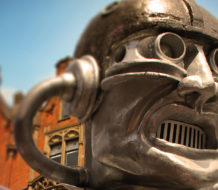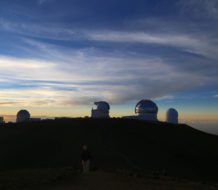The work of Ursula Le Guin is famous for the way in which it deals in ethical considerations – power in gender relations, the creation of a just society, the correct use of power. Aware as she is of the necessity of achieving balance in such matters, her work rarely deals in any kind of certainty – she is more interesting in setting out accurately the issues at stake. The backgrounds of Le Guin’s science fiction and fantasy are thoroughly sensually imagined – cold wastes and the warm homes in which people survive them in The Left Hand of Darkness(1969), the world-spanning archipelago of very different societies unified by magic in A Wizard of Earthsea (1968) – existing at once as an autonomous play of the imagination and as backgrounds for the accurate presentation of the field of play. These landscapes have a symbolic element to be sure, but they are far more – painted stages that are as much characters as the men, women, aliens and dragons that inhabit them.
Right at the start of her career as a writer, Le Guin attempted something of the sort for the first time in an unpublished novel about the Central Europe she had not yet visited, creating an imaginary country somewhere in the marchlands between the Ottoman and Habsburg empires that she called Orsinia – possibly because it has something in common with the Illyria of Shakespeare’s Orsino. That novel led Alfred Knopf to encourage her, the daughter of an old friend, but she felt that its centuries-spanning plot was too ambitious and scrapped it. When she came back to the matter of Orsinia, it was some years later and even then she wrote and revised the Orsinia novel Malafrena several times before it appeared in 1979. Before that, she had published several of the science fiction and fantasy novels and stories for which she is most famous, as well as a collection of stories, set in a variety of historical periods, which she called Orsinian Tales (1976). Now these works appear again in the first volume of a Library of America edition of her work.
Get BQO by E-mail
ESSAYS
-

What Is Moral Injury?
-

What Does It Mean to Have Free Will?
-

Should We Fear Robots?
-

Do We Need Purposes in Biology?






